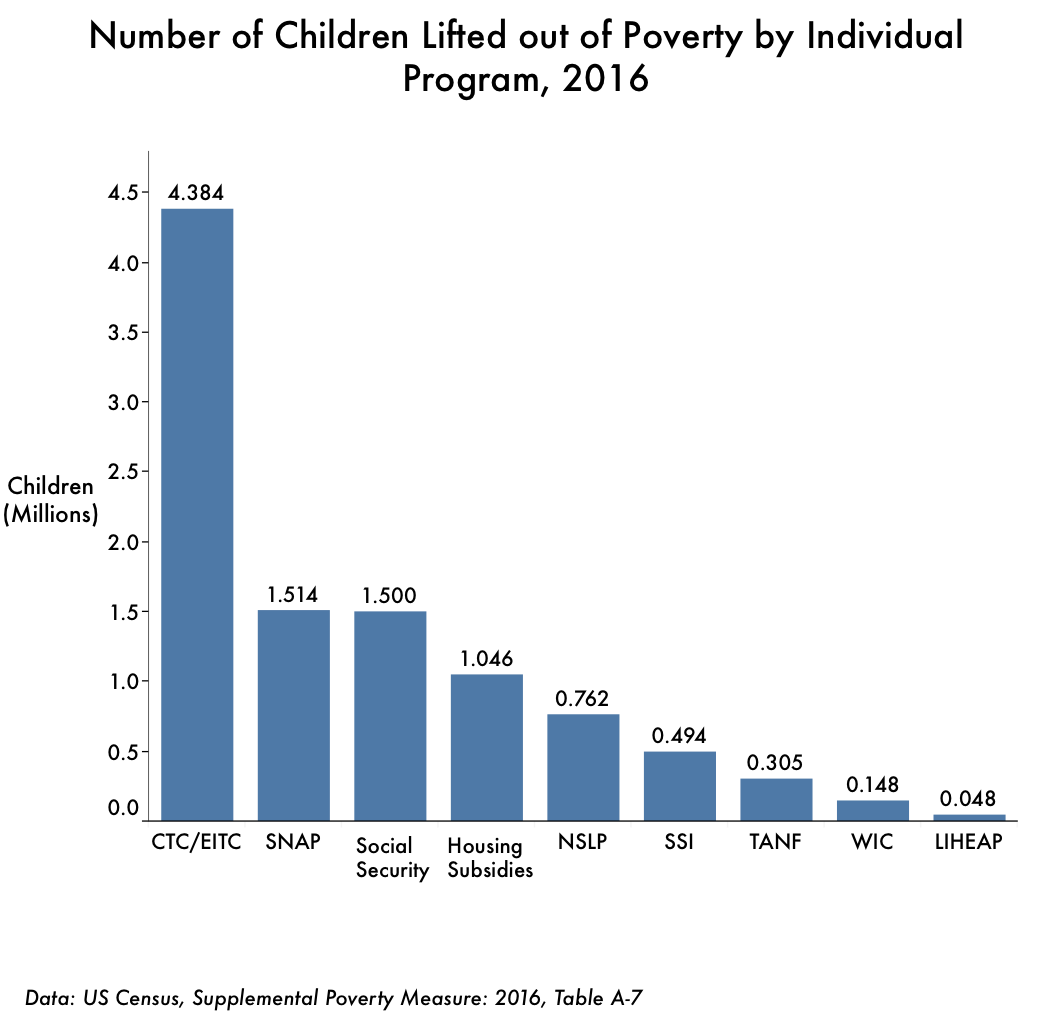Today, the U.S. Census Bureau released its annual data on children living in poverty in the U.S. and it confirms three things that we know to be true:
- Child poverty in the U.S. remains high.
- Children continue to disproportionately experience poverty in the U.S.
- The child poverty rate would be much higher without effective anti-poverty programs.
The data shows that 18 percent of children -13.3 million – were living in poverty in 2016 (the official poverty line for a family of four with two children is $24, 339). The good news that 1.3 million less children were living in poverty in 2016 – but U.S. child poverty rate still remains stubbornly high, and children continue to disproportionately experience poverty in the U.S. The reality is that kids make up 23 percent of the U.S. population, but account for 33 percent of the population living in poverty.
But those numbers alone don’t tell the whole story. There are large disparities for children of color: the poverty rate for Black and Hispanic children continues to be significantly higher than for white children, with rates of 30.8 percent and 26.6 percent respectively compared to 10.8 percent for White, non-Hispanic children.
The data also revealed that our youngest children continue to experience higher levels of poverty while undergoing critical stages of cognitive and physical development. There were 19.5 percent of related children under 6 living in poverty in 2016.
We still have 6 million children (8.2 percent) living in extreme poverty. These are children living in households with incomes bringing in just over $12,000 a year, meaning they struggle to afford necessities to support their children’s healthy development.
While these numbers are discouraging, we know they would be much higher without effective anti-poverty programs. The Supplemental Poverty Measure data, also released today, shows how many children were lifted out of poverty by these programs:
- Refundable tax credits: 4.4 million children
- Supplemental Nutrition Assistance Program (SNAP): 1.5 million children
- Social Security: 1.5 million
- Housing subsidies: 1 million children
- Temporary Assistance for Needy Families (TANF): 305,000 children
- The National School Lunch Program (NSLP): 762,000 children
- Supplementary Nutrition Program for Women, Infants and Children (WIC): 148,000 children
- Supplemental Security Income (SSI): 494,000 children
- Low Income Heating Assistance Program: 48,000 children
Click here to download the chart
Despite the effectiveness of these programs in lifting children out of poverty, there are proposed cuts and structural changes that would weaken these programs’ ability to lift children out of poverty and support families in achieving long-term financial stability.
Moving forward with these cuts and harmful changes is the wrong direction. Instead, we need to build on what works and enact policies that ensure that every child lives in a household with an income sufficient to meet their basic needs and support their healthy development. This amount should ensure that every child is lifted out of poverty and not subject to the whim of economic downturns or parental labor participation.
Strengthening tax credits is one way to do this. Despite the fact that the Earned Income Tax Credit and Child Tax Credit lift millions of children out of poverty each year, there are improvements that can be made to increase their effectiveness at reducing child poverty in the U.S., especially in reducing deep child poverty and better supporting families in their pursuit of economic mobility.
We need Congress and the Administration to prioritize and protect programs that work to give every child the best start in life.
For further information and ways to take action to reduce child poverty:
- Census Data Highlights Devastating Effect of Poverty on Children (U.S. Child Poverty Action Group)
- Take Action on the Child Poverty Reduction Act of 2017
- The Welfare Reform and Upward Mobility Act is the Wrong Direction to Reduce Child Poverty

